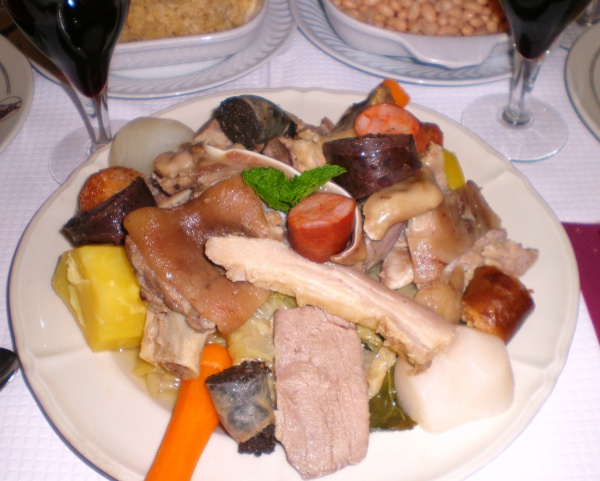Facts About Cozido
Cocido, or cozido, is a cherished traditional stew enjoyed as a main dish in Spain, Portugal, Brazil, and other Spanish- and Portuguese-speaking countries. The name "cocido" in Spanish derives from the verb "cocer" meaning "to boil" while "cozido" in Portuguese originates from "cozer" which means "to cook" "to boil" or "to bake."
This hearty stew typically consists of an assortment of meats, including pork, beef, chicken, and mutton, along with sausages (embutidos) and a variety of vegetables such as cabbage, turnips, parsnips, potatoes, carrots, and chickpeas. Some recipes even suggest adding eggs or cheese just before serving. The slow cooking process over low heat allows the flavors to meld together, resulting in a comforting and flavorful dish. Additionally, regional variations incorporate unique ingredients and preparation methods.
In Portugal, cozido à portuguesa is an aromatic stew brimming with a mix of vegetables, meats, and smoked sausages, showcasing the country's rich culinary traditions. Another popular version, cozido de grão, features chickpeas as the star ingredient. On São Miguel Island in the Azores, cozido das Furnas takes a unique approach by cooking the stew underground using the natural heat from volcanic activity.
Brazilian cozido offers its own twist, often including ingredients like potatoes, sweet potatoes, carrots, cassava, and sometimes even bananas. This version highlights the diverse regional ingredients and culinary practices found across different regions of the country.

 Spain
Spain